
All categories
Featured selections
Trade Assurance
Buyer Central
Help Center
Get the app
Become a supplier

(1023 products available)




















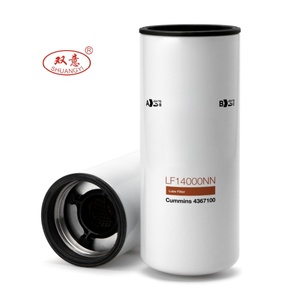
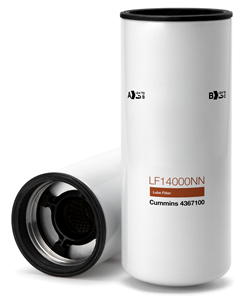
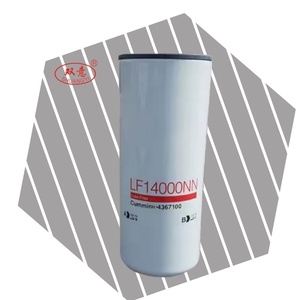
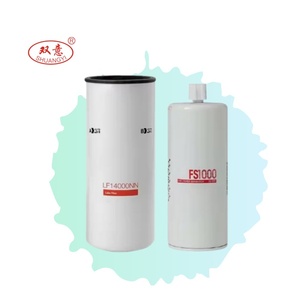
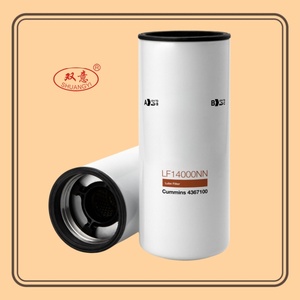
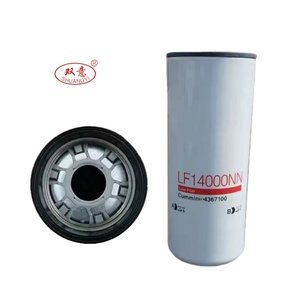





















The LF3703 oil filter is an important part of the oil lubrication system in internal combustion engines and other equipment that require oil as a lubricant. The LF3703 oil filter traps and filters impurities from the oil to ensure that moving parts of the machinery remain well lubricated, reducing wear and tear and preventing damage to the engine. There are different types of oil filters, depending on the design and the type of filtering media used.
Spin-on oil filters
These filters come in a metal housing that is cylindrical like a soda can. The filtering material inside is often made of pleated paper. Spin-on oil filters are the most commonly used oil filters because they are easy to install and replace. They are simply screwed onto the engine like one would a standard threaded bolt. Besides easy installation, the spin-on oil filter also minimizes the risk of leaks. The LF3703 oil filter from various manufacturers comes in this design.
Cartridge oil filter
These oil filters use a filter element made of paper, cloth, or plastic. The filter element is installed in a filter housing and mounted to the engine. The filter housing and filter element are separated during replacement. The used filter element is disposed of, and the housing and lid are closed with bolts. The use of a cartridge filter element reduces waste and is more environmentally friendly. However, cartridge oil filters are more complex and cartridge filter assemblies are difficult to access, making them more expensive.
Belt oil filter
Belt oil filters are used in large engines, such as those found in ships, mining equipment, locomotives, and oil drilling rigs. The LF3703 oil filter is ideal for use in commercial diesel vehicles and heavy-duty trucks. Instead of the standard spin-on design, the LF3703 oil filter can come in a cartridge filter design.
Magnetic oil filters
Magnetic oil filters use a magnetic field to attract metallic particles in the oil. They are used alongside standard oil filters as they are not efficient in filtering non-metallic particles.
Coalescing oil filter
These oil filters are designed to remove water and other contaminants from oil. Coalescing filters are used in oil pipelines and oilfield equipment to ensure that the oil being transported or stored is free of impurities and the quality is maintained.
The Lf3703 oil filter is a crucial component of the lubrication system in most internal combustion engines. It is designed to remove contaminants from engine oil and transmission oil, ensuring that these vital fluids remain clean and free-flowing. By filtering out impurities, the LF3703 oil filter helps maintain optimal lubrication, reducing friction and wear on engine parts. This, in turn, extends the lifespan of the engine and improves its overall performance.
Nevertheless, like any other engine part, the LF3703 oil filter requires regular maintenance. Here are some maintenance tips that will help keep the oil filter in good condition.
Regular Oil Changes
It's important to change the engine oil regularly as recommended by the car manufacturer. When it's time for an oil change, the old oil is drained out, and the new one is added. This process helps maintain the oil filter in good condition by removing dirt and debris, allowing the oil to flow freely and lubricating the engine parts. Lubrication reduces friction and wear, which can damage the oil filter.
Use Quality Oil and Filters
Using high-quality oil and filters is important for the health of the oil filter. Quality oil ensures that the oil filter works effectively by removing impurities and contaminants from the oil, maintaining a clean and smooth flow. This also ensures that the oil flowing through the oil filter is clean, reducing the chances of clogging and extending its lifespan. The oil and filters work together to keep the engine clean and running smoothly, which ultimately helps maintain the oil filter.
Inspect the Oil Filter
The oil filter should be inspected regularly for any signs of damage or leaks. This is important because even a small issue can greatly impact its performance. Inspecting the oil filter ensures that it is in good condition and functioning properly, which helps maintain the oil quality and keeps the engine clean.
Don't Over-tighten the Oil Filter
Over-tightening the oil filter can cause damage to the gasket and housing, leading to leaks and filter failure. It is important to follow the manufacturer's instructions for proper installation to avoid this issue. A properly installed oil filter ensures a tight seal and prevents oil leaks, maintaining oil quality and keeping the engine clean.
Check Oil Level
Monitoring the oil level is essential to oil filter maintenance. The oil level should be checked regularly to ensure it is at the recommended level. This is important because low oil levels can cause the oil filter to work harder, leading to premature failure. On the other hand, overfilling can put extra pressure on the oil filter, causing damage and leaks.
Wholesale buyers should consider several factors when purchasing LF3703 oil filters for resale. The source of the oil filter brand is the first thing to consider. Does it have a good reputation? Does it have a loyal customer base? These are some of the questions that buyers should investigate before purchasing any oil filters.
Quality is the most important factor when choosing oil filters. Buyers should ensure they stock quality oil filters. They can rely on customer reviews to gauge the quality of the oil filter. They can also check if the oil filter has certifications from relevant authorities, such as the ISO certification.
Another important factor to consider when purchasing oil filters is the price. Buyers should conduct market research to understand the price offerings of various suppliers. They should also evaluate the quality of the products on offer to ensure they get the best value for their money.
For easy movement of the LF3703 oil filter, wholesalers should purchase them in bulk. Many suppliers offer products in various pack sizes. Some offer products in packs of 10, while others may offer products in packs of 100 or 1000. Depending on the business model, it would be advisable to purchase oil filters in large pack sizes.
Wholesalers should also consider the availability of the LF3703 oil filter from the supplier. They should work with suppliers who have reliable stock so that they can easily replenish their inventory. Furthermore, the supplier should be able to inform the buyers in advance if they plan to discontinue the product.
The LF3703 oil filter is easy to replace. Here is a step-by-step guide
1. Safety precautions
Turn off the engine and give it time to cool. Wear gloves and glasses to protect oneself from oil splatters and the engine's hazardous parts.
2. Gather the necessary tools
One needs an oil catch pan, a new LF3703 oil filter, oils, a wrench set, funnel, and jack stands or ramps to raise the vehicle and provide access to the oil filter.
3. Prepare the vehicle
Use the jack stands or ramps to lift the vehicle. The LF3703 oil filter is found on the underside of the vehicle, so one needs to raise it for easy access.
4. Locate the oil filter
The oil filter is located on the underside of the engine. It is a cylindrical metal part that is about 3 inches in diameter and 5 inches long.
5. Remove the old oil filter
Place the oil catch pan under the oil filter to collect any oil that may drip. Use a wrench to loosen the oil filter and then unscrew it by hand. Be careful not to drop the oil filter, as it may contain old oil that can spill on the ground.
6. Prepare the new oil filter
Take the new LF3703 oil filter out of its packaging and apply a small amount of clean oil to the rubber gasket on the top. This will help create a seal and make it easier to remove the oil filter in the future.
7. Install the new oil filter
Screw the new oil filter onto the engine by hand. Use a wrench to tighten it gently, but be careful not to over-tighten, as this can damage the gasket.
8. Check for leaks
Run the engine for a minute and then check the oil filter for leaks. If you see any oil seeping out, tighten the oil filter until the leak stops.
9. Dispose of the old oil filter
Take the old oil filter to a recycling center that accepts used oil filters. Do not throw it in the trash, as the oil filter may still contain old oil that can harm the environment.
Q1. What does an oil filter do?
A1. An oil filter cleans the oil that goes into the engine. It stops things like dirt, tiny metal bits, and sludge from getting into the oil. This way, the oil stays clean and can do its job of keeping the engine smooth and safe.
Q2. When should the oil filter be changed?
A2. It's best to change the oil filter every time one gets an oil change. This keeps the oil clean and protects the engine. Sometimes, problems like leaks or damage can occur with oil filters. If one sees low oil pressure, dirty oil, or oil seeping through the filter, it might need replacing. Better safe than sorry, right?
Q3. Is it okay to use a used oil filter?
A3. No, using a secondhand oil filter is not recommended. While it may look fine from the outside, there could be hidden issues. It probably won't filter as well after all that use. Even if it passes a visual check, it might fail under pressure. To be on the safe side, always use a brand new oil filter.
Q4. Can an oil filter last more than 10000 miles?
A4. Most oil filters are designed to provide good filtration for up to 10,000 miles with routine oil changes. After that, their filtering ability may gradually decline. For optimal engine health, switch to a new oil filter at or before 10,000 miles. Don't take chances—better to keep the engine running clean!
Q5. Can one drive with a damaged oil filter?
A5. It is not advisable to drive with a faulty oil filter. Even a small problem like a minor leak can lead to low oil pressure over time. This puts the engine at risk. If the oil filter is damaged, replace it immediately to avoid potential engine damage from unfiltered or low-quality oil.